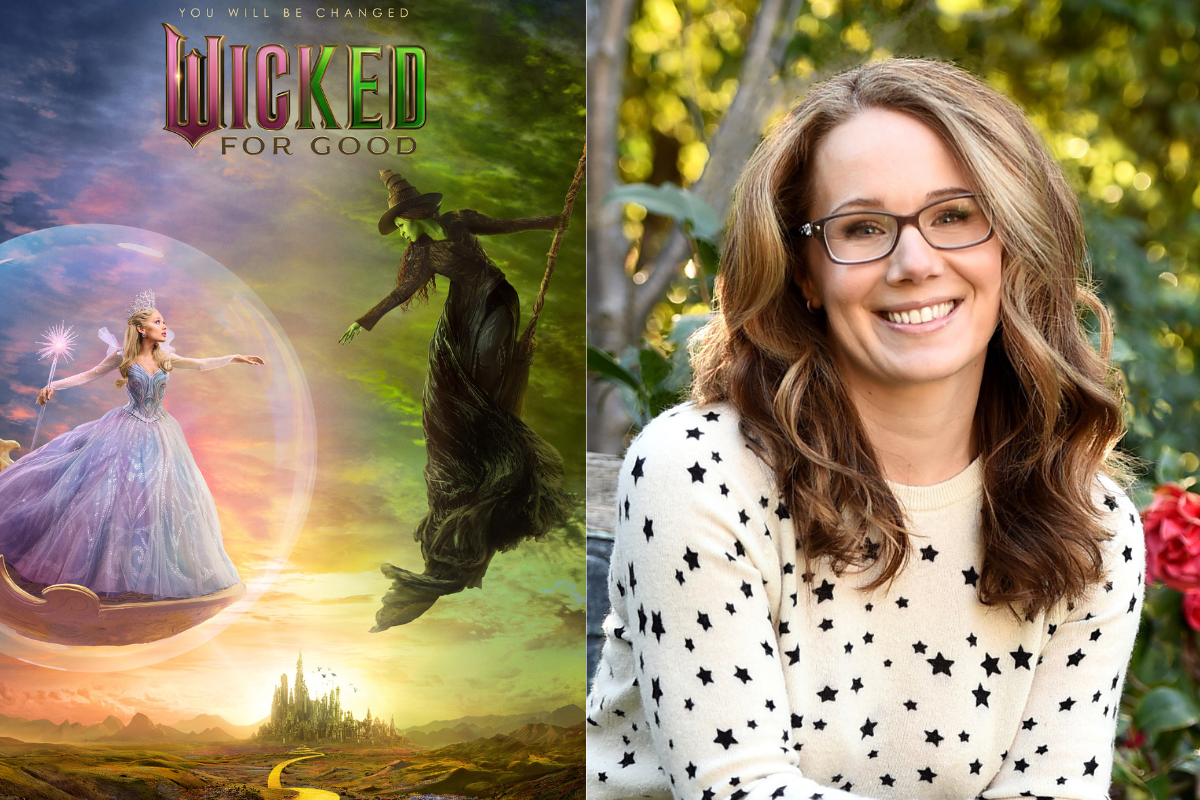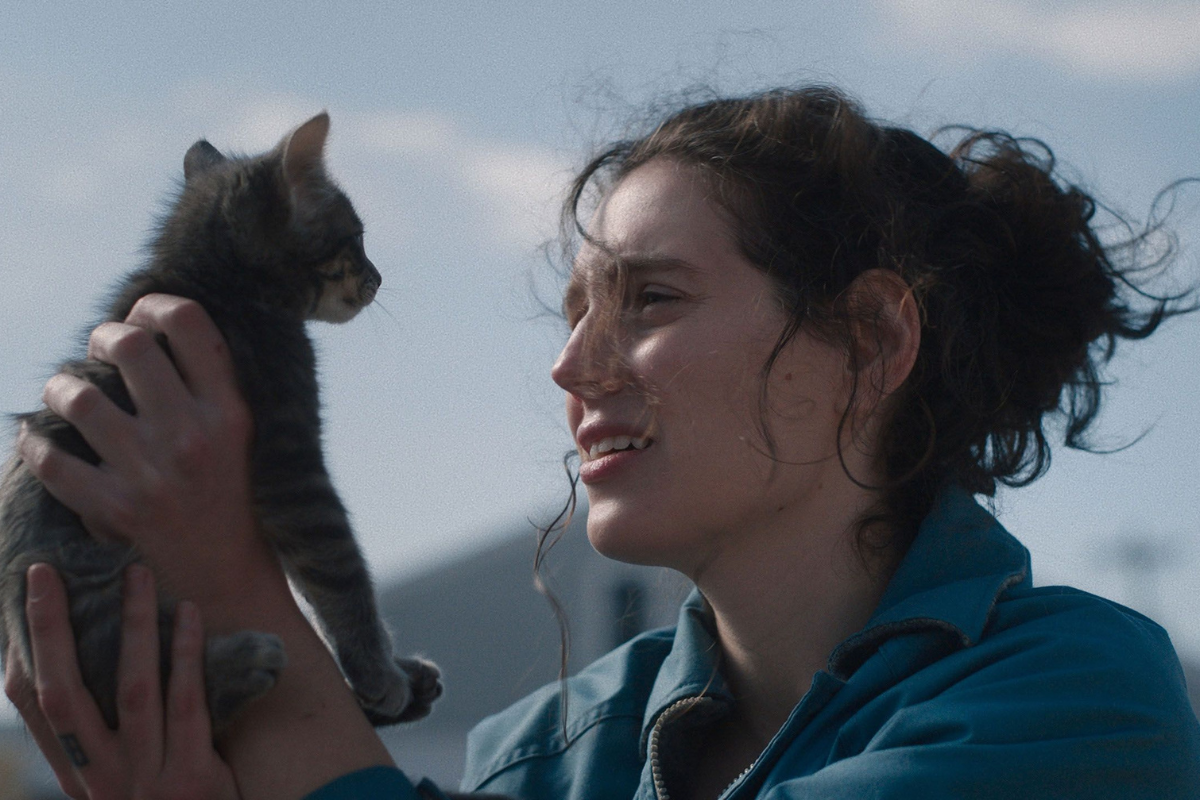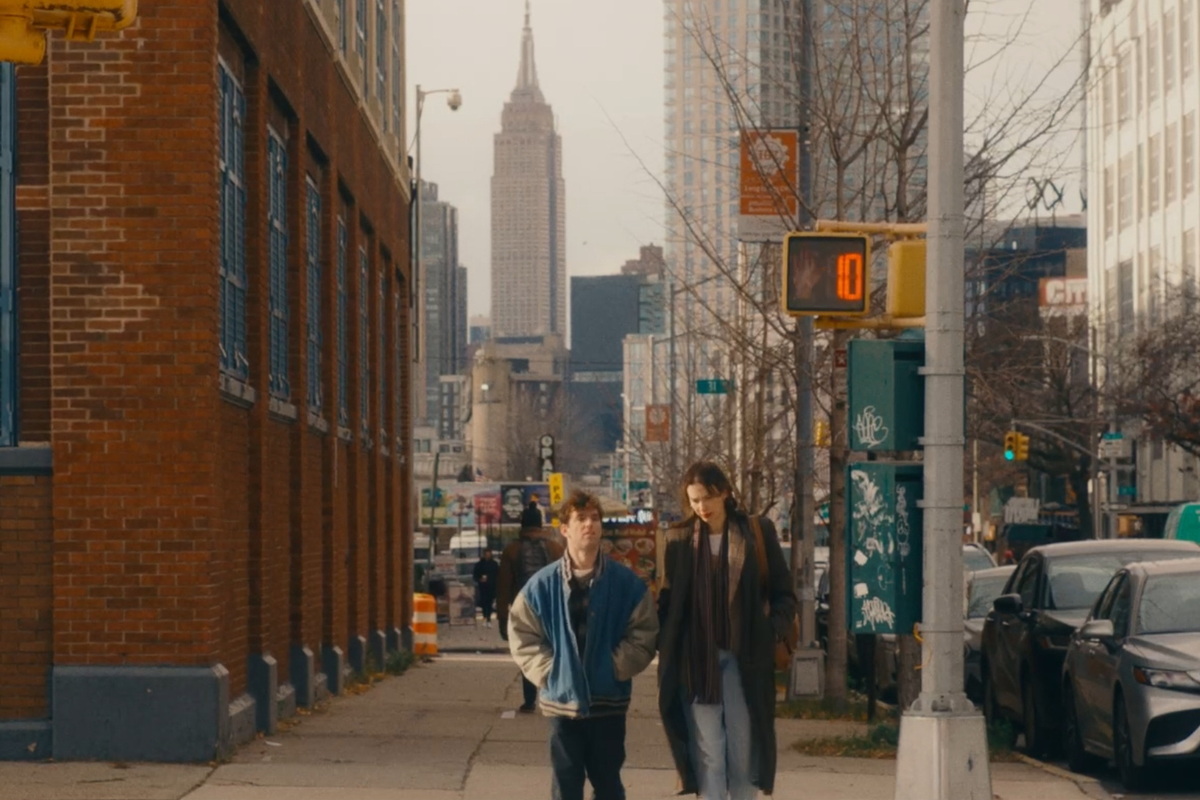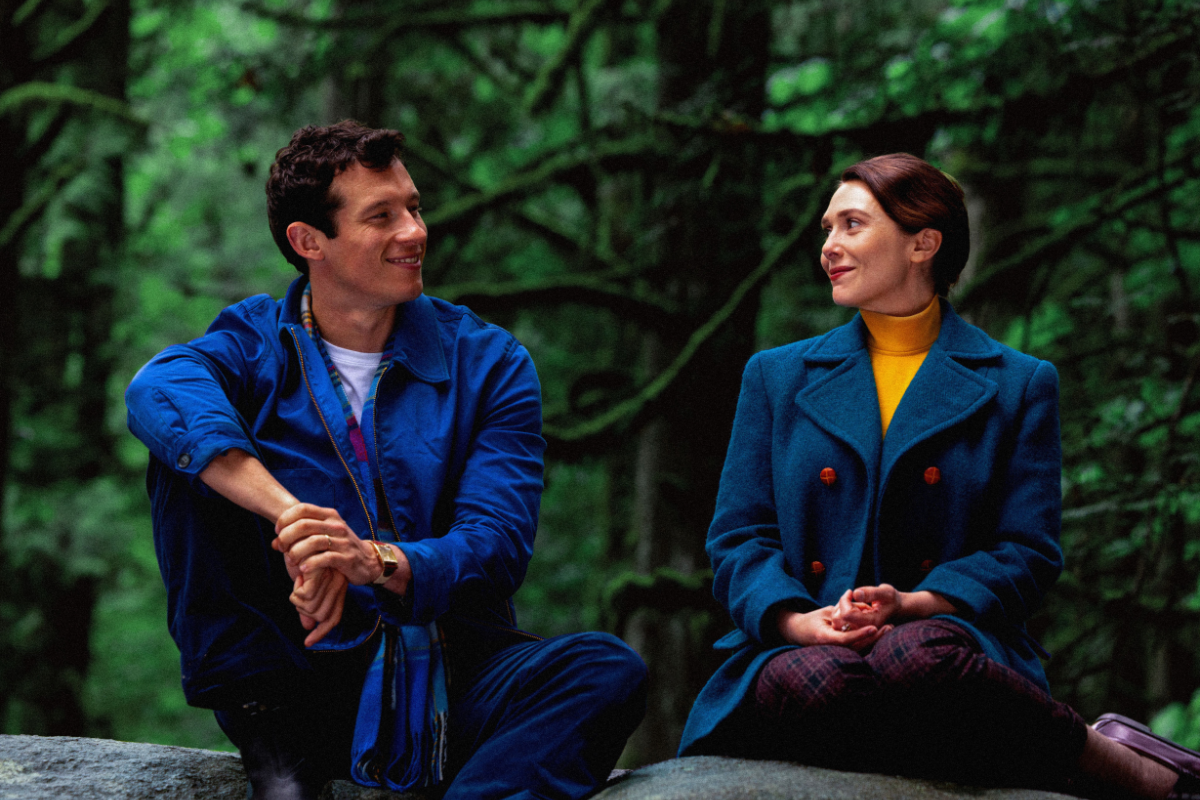Mental Health and the Arts: A Conversation with ‘Continue’ Filmmaker Nadine Crocker
Nadine Crocker gives insight into writing the script for the film, connecting with others, her distinct vision as a director, and most importantly, starting a movement with her nonprofit Continue On.
A girl suffering from depression is forced to get her life together when she is taken involuntarily to a mental institution, after trying to follow in her fathers footsteps, but failing her suicide attempt. She finds unlikely friends, unwavering love, and a life she never imagined possible. All to find out some decisions can’t be undone. You only get one life...
Filmmaker and mental health advocate Nadine Crocker withholds nothing in her latest film, Continue. It’s a multi-layered inside portrait of the struggle of dealing, coping, succumbing, and healing. Based on her personal story, it’s raw and vulnerable. And the ending...well you'll just have to see for yourself.
Nadine Crocker recently spoke with Script about writing the script for the film, connecting with others, her distinct vision as a director, and most importantly, starting a movement with her nonprofit Continue On.
This interview has been edited for content and clarity.
Sadie Dean: When was that moment when you realized you needed to your story?
Nadine Crocker: It happened in a really organic way. And it was almost like I was just trying to process a lot of my years of trauma. I have severe PTSD from my childhood, I've packed in a lot of life in the 35 years I've been on this planet. And I had this acting class…we had a lot of freedom, they knew I loved writing and that I wanted to be a screenwriter and was still kind of working up the courage to tackle a script. And I started writing scenes from my life, and putting them up in class kind of just as like a way of processing for myself, and starting to wrap my brain around, ‘Can I do this story? Will people resonate with it?’ I just need to face some of these memories.
So, I wrote these scenes. And as I was putting them up in class. Whenever class was over…everybody would come up to me and were so emotionally rocked and would immediately start telling me their story. I remember, one of the first people that came up to me and was instantly crying and was like, ‘When you said that, that line, I always thought I was an artist, and I had to stay in these deep, dark places to create my art, and maybe that's bullshit too. And when you went into the explanation of it all, it was like you were reading my mind.’ And that just started to increase the more and more scenes I did. And I went, ‘Holy fuck, this is a device,’ because I've always known empathy, when you do a deep dive on filmmaking, it's like a film is one of the only mediums that immediately activates the empathy inside our audience, right? So, I knew it was a way of possibly getting people to empathize with depression, suicidal ideation, maybe their mental health, a family member or friend that is struggling, maybe it was a way to get them to look with new eyes with empathy to see this person struggle.
But when I saw how it opened other people up, I was, like, ‘Oh, my God, this can start a conversation.’ And so I was like, ‘I have to do this.’ So, I started writing. And the only thing I knew was the ending. I started from the ending, because I knew that was my message of basically, everything I have now, I'm a mother, I'm a wife, and all of these things, I would have never had any of them if I hadn't survived that night. And so, I knew that I wanted to share the perspective of both realities and let them see all the beauty I would have reached and then rip it all away from them. Because that's the same thing our family feels when they don't know what we would have become, when there's all these unanswered questions. I still get chills every time I talk about it.
It started as a way for me to work through things and then blossom to realizing I could start a conversation and I help other people by just being so open and vulnerable about my deepest scars and my deepest trauma. And there was definitely a lot of fear of especially in that time of like, ‘Are people gonna think I'm crazy? Are they going to judge me? Am I actually going to be able to help and make other people realize they're not alone?’
Sadie: You’re wearing so many different creative hats, but what was your directing approach, especially on top of the character work you’re doing?
Nadine: It’s so many, so many parts. It was the preparation work I did before I ever got to set. As a filmmaker we work for free in the shadows forever before we actually get to make it right. [laughs] So, I had shot listed the entire movie, my DP [Sy Turnbull] had come in and gone through the shot list with me for like eight months, really making sure our shot list was so dialed in, so that there was never a question. And I'm very visual even…I build these huge decks, so you visually can see the world so much you can taste it. And I make mood boards for every location, so the art team knows exactly what I'm looking for. I am so dialed in in preparation work that you really know what we're doing before we get there.
And then I would show up with my DP like an hour and a half before anybody else to walk every nook and cranny of the space to talk about every shot, to talk about exactly where I wanted to do, what I wanted to happen. And then by the time the crew is setting things up, I'm off to hair and makeup chair and wardrobe and doing all of that while he's setting up.
I am absolutely nothing without the people that I collaborated with. Once again, Sy Turnbull, my DP, I trusted him implicitly, my producers, my husband, Anthony Caravella, Jay Seals - they were my eyes on those monitors. All of my collaborators, all the preparation, even down to the art team - I know exactly what I want. I really show you what I want. We really talked about it in depth. And then I let go, because I can't micromanage, I chose these people for a reason. And that's where trust comes and that's where you trust that you chose them because of their gifts, and you have to let their gifts thrive too in order for me to wear so many hats.
Sadie: Finding the rhythm of the cut and even that ending, what was the editing process like?
Nadine: Everything was pretty planned out, because I’m very specific about everything. I hate bouncy edits, I hate when people use too many shots. Even if I have beautiful shots, I'm like, ‘It's taking me out by cutting to that new beautiful shot. And even though it's there, I really think it just needs to live in this close-up. And maybe we'll find a moment to go to the two shot because it's gorgeous. But that's not really my priority.’ Once I'm done with all the shots, even if it's there, and it's gorgeous, doesn't mean it's necessary.
I looked at movies, like Blue Valentine, for example, one of my favorite movies of all time, because it's so simple, but it's also not so simple. Everything about it makes you feel like you're watching this couple's most intimate moments. And so, I'm always as a filmmaker going, ‘How do I make this feel so close to reality, and make them forget they're watching a movie?’
Everything about the choices that I make is kind of like always messing with the emotions of the audience, or trying to make them feel really uncomfortable, or make them feel happy, or laugh in the middle of this sad movie. Everything's very deliberate in that sense. But I also lucked out. Jing Han is my editor. She's an unbelievable editor, she did my second film to Desperation Road, she's just an incredible artist. She was my ride or die. And I love her. She always honored my vision, but we'd have full long debates. My favorite thing is that she never like just gave in to me.
Sadie: I’d love to talk about nonprofit Continue On, it’s like art meets mental awareness. And you’re doing this as an independent filmmaker. I think you're doing something really cool that I hope other people really take notice of especially the studio system – they talk the talk, but don’t typically walk the walk.
Nadine: What I'm trying to do more than anything is start a movement. So, with every single one of my films, I have a cause that I am partnering to try and elevate, and I donate a portion of my points. So all my points from writing went to a charity for mental health and suicide prevention, not just my charity. It's being split between other existing charities because I didn't want this film to benefit my nonprofit, it was more like everyone within the space, is trying to make change. And even down to my other film that we're casting right now is on domestic abuse and mental health and suicide prevention, and my other is Alzheimer's, and then climate change. So, I have all these causes.
And my hope is that one day, I always use the example because my producers Robbie Brenner, she's one of my dearest friends, she's my mentor, I love her. And she created Barbie. I always say if Barbie had given just one point to like another example, because I'm close with them is the Geena Davis organization, for getting women work within our industry, they given 1% on a billion-dollar movie, we could have made a huge impact within that space of what they're actually talking about. They're elevating a message. But what if we're elevating a message and making a difference? So that is what I want to create. And that's why I'm not going to stop and even if it means donating my points, that's what I want to see continue to happen.
But with Continue On, in particular, it was always my dream to create a nonprofit, and if the movie hadn't taken a while to get distribution, I probably would never would have been able to save my pennies, take the money from Desperation Road - it's really expensive to create a nonprofit. I was finally able to do it so that they could come out together and coincide.
And really the way that all started is because I was taking a timeout after COVID I was having a time of struggle and I wanted to check back in with a psychiatrist just to make sure I'm doing good and talk to them about kind of what I was experiencing. And that's actually when I got diagnosed with PTSD…and I realized how expensive mental health services are and I couldn't afford them. Not one that had been recommended to me by all these people I know in the mental health world took insurance. Every single one of them was $675 an hour or for 30 minutes. So, I'm like, ‘So you need $1,200 to get me just started.’ And I literally started crying to them. And I was like, ‘This makes me feel so hopeless, because what I'm realizing is our youth is the highest number in death by suicide. And I can't afford this at the age of 35. How is anyone going to afford help?’
And then I was like, fuck this. And so, I started making my nonprofit. My ultimate goal is to create a subsidy and have all of my films, especially my mental health films have a percentage that all go into this nonprofit, it's so that my proceeds from my film are actually creating this subsidy. And then I match youth with mental health professionals in their area and pay for 100% of the costs. But that takes so much work to get that much money to create the subsidy to get providers to partner with and do these workshops, where we use the arts to talk about mental health and all this stuff.
So, I made it a multi-initiative nonprofit because on my way of raising all of that money to create the subsidy, I want to see other mental health projects come to light so that we're continuing to elevate the subject and break the stigma. I just partnered with a film festival, I did a pitch contest, and we ended up giving a $1,500 out in grants to other filmmakers to make their short films that were about mental health. So, I'm like, ‘OK, let's make a movement.’ Also, on top of that, let's help elevate other filmmakers voices, because I know I was met with like, ‘No mental health, no mental health, no mental health.’ And I'm like, ‘Come on mental health!’
Continue will be available in Theaters on September 6, 2024.
Sadie Dean is the Editor of Script Magazine and writes the screenwriting column, Take Two, for Writer’s Digest print magazine. She is also the co-host of the Reckless Creatives podcast. Sadie is a writer and filmmaker based in Los Angeles, and received her Master of Fine Arts in Screenwriting from The American Film Institute. She has been serving the screenwriting community for nearly a decade by providing resources, contests, consulting, events, and education for writers across the globe. Sadie is an accomplished writer herself, in which she has been optioned, written on spec, and has had her work produced. Additionally, she was a 2nd rounder in the Sundance Screenwriting Lab and has been nominated for The Humanitas Prize for a TV spec with her writing partner. Sadie has also served as a Script Supervisor on projects for WB, TBS and AwesomenessTV, as well as many independent productions. She has also produced music videos, short films and a feature documentary. Sadie is also a proud member of Women in Film.
Follow Sadie and her musings on Twitter @SadieKDean







